Poshak Puralekh: A Celebration of Indian Dance Costume
A National Lottery Heritage Fund Project.
Published: 4 November 2020
New Collections
The Centre for Indian Classical Dance (CICD) has been teaching young people to dance and helping to establish Leicester as a world leader in South Asian culture ever since 1981, and so in 2021 it celebrates its 40th anniversary.
Poshak Puralekh, its most recent project (which means ‘Costume Archive’) celebrated the hundreds of costumes amassed since the Centre’s foundation by Nilima Devi MBE. It recorded these, found good homes for many, and ran a programme of events and activities which showcased the costumes through late 2019 and early 2020. Showcase locations were spread around Leicester and were seen by many people. Locations ranged from the Guildhall, Abbey Pumping Station, and Leicester Museum to Curve, Peepul Enterprise, Radio Leicester, Sue Townsend Theatre and ISKCON- the International Centre for Krishna Consciousness. They also took place at Mela and Diwali celebrations in front of large crowds.
Leicester Museums & Galleries have been key partners, giving much needed financial support for this work, which was mainly funded a grant from the National Lottery Heritage Fund.
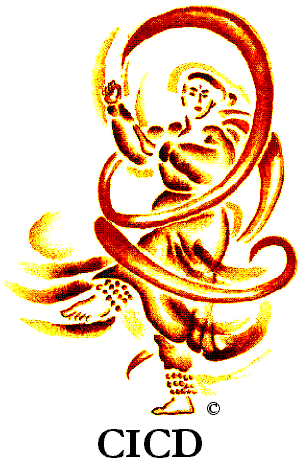

One of the aims of this project was to reduce the number of costumes stored by CICD, and so among Leicester Museums & Galleries most recent acquisitions has been a small collection of some of the highlights of the collection.
Another aim was to record the 40 year history of the centre. So all the costumes were photographed, seven oral history interviews were carried out and a short film was made, narrated by Nilima Devi MBE.
Further details of Poshak Puralekh, including the oral history interviews and short film, can be found on the CICD website.
Collections Highlights
Discover some key items from the 15 costumes donated to Leicester Museums & Galleries as a result of the project.
<div class='row'><div class='half'>Purple Silk Hindu-style Kathak costume, 1990s
Blouse (Choli) - Purple Silk with cerise and gold ‘Banarasi’ style border sleeves and handmade silk pattern with special woven gold thread material.
Skirt (Chaniya) - Purple silk with ‘Banarasi’ style cerise and gold front and bottom border and handmade silk pattern with special woven gold thread material
Scarf (Dupatta) - Cerise georgette
History - The costume was made from a traditional rich Banarasi silk saree and stitched in India by a special tailor. It was worn by Nilima Devi for various Kathak performances. It would have been worn with matching plain trousers which were probably cotton.
</div><div class='half'>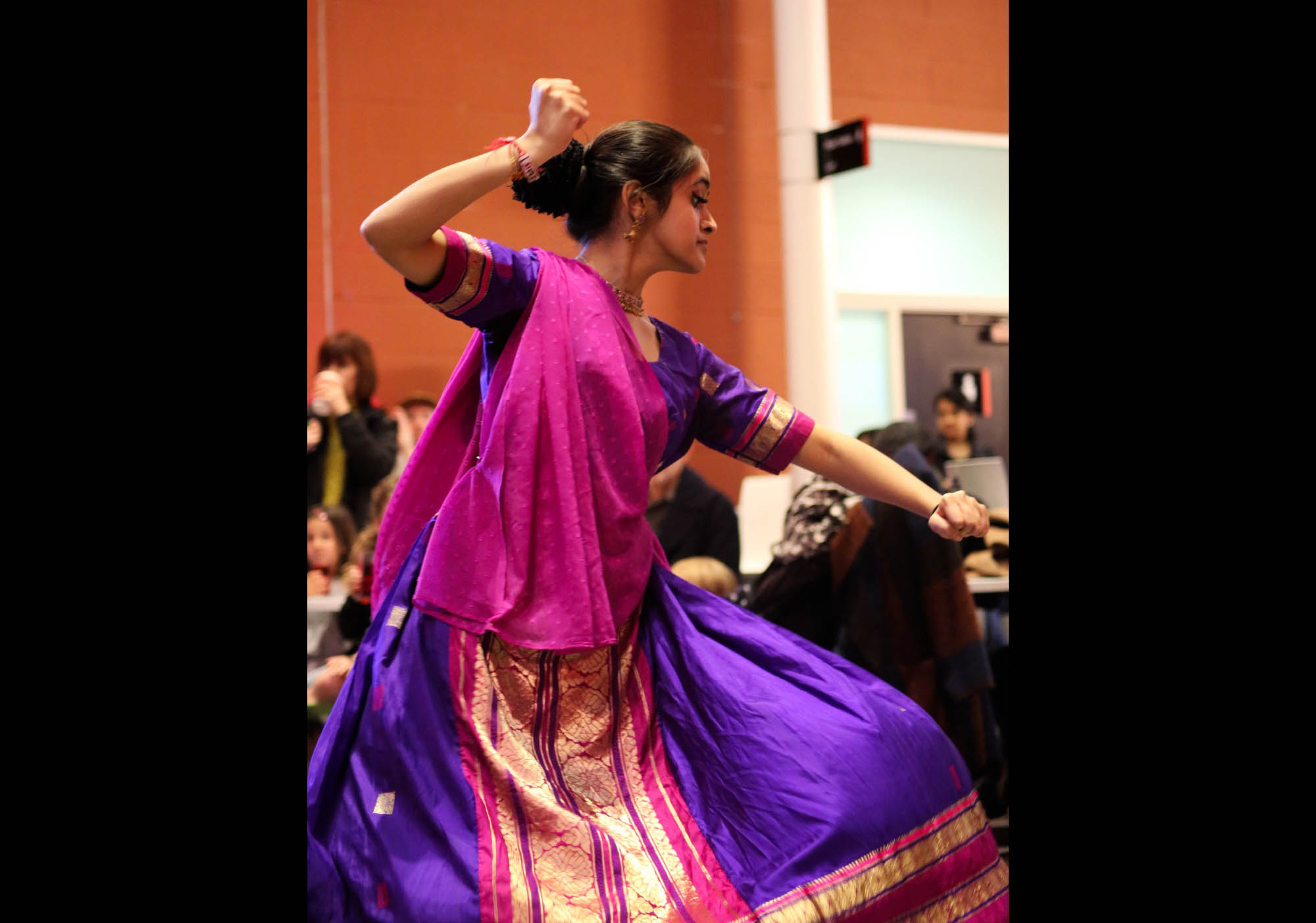
Purple Silk Hindu-style Kathak
'The Ugly Duckling’ Swan costume, 1989
Frock - White polyester silk with attached ‘wings’ at back in white chiffon
Scarf (Dupatta) - White chiffon with gold patterns stitched to front
Headgear - White feathers mounted on polyester wadding.
History - This large-scale production was staged in 1989, in a partnership between CICD and Arts in Education, which was located at Knighton Fields. The story was based on Hans Christian Anderson’s book called the Ugly Duckling. It was performed in the style of Indian creative and Kathak dance. This costume was designed by Loughborough College of Art and Design students for the swan character. The white polyester silk material gives the costume a light flowy feel, accentuating every whirling movement. The wings attached at back in white chiffon to represent the wings of the Swan. Other costumes included those for an old woman and many farmyard animals. The photograph below shows this costume worn in 2019.
</div><div class='half'>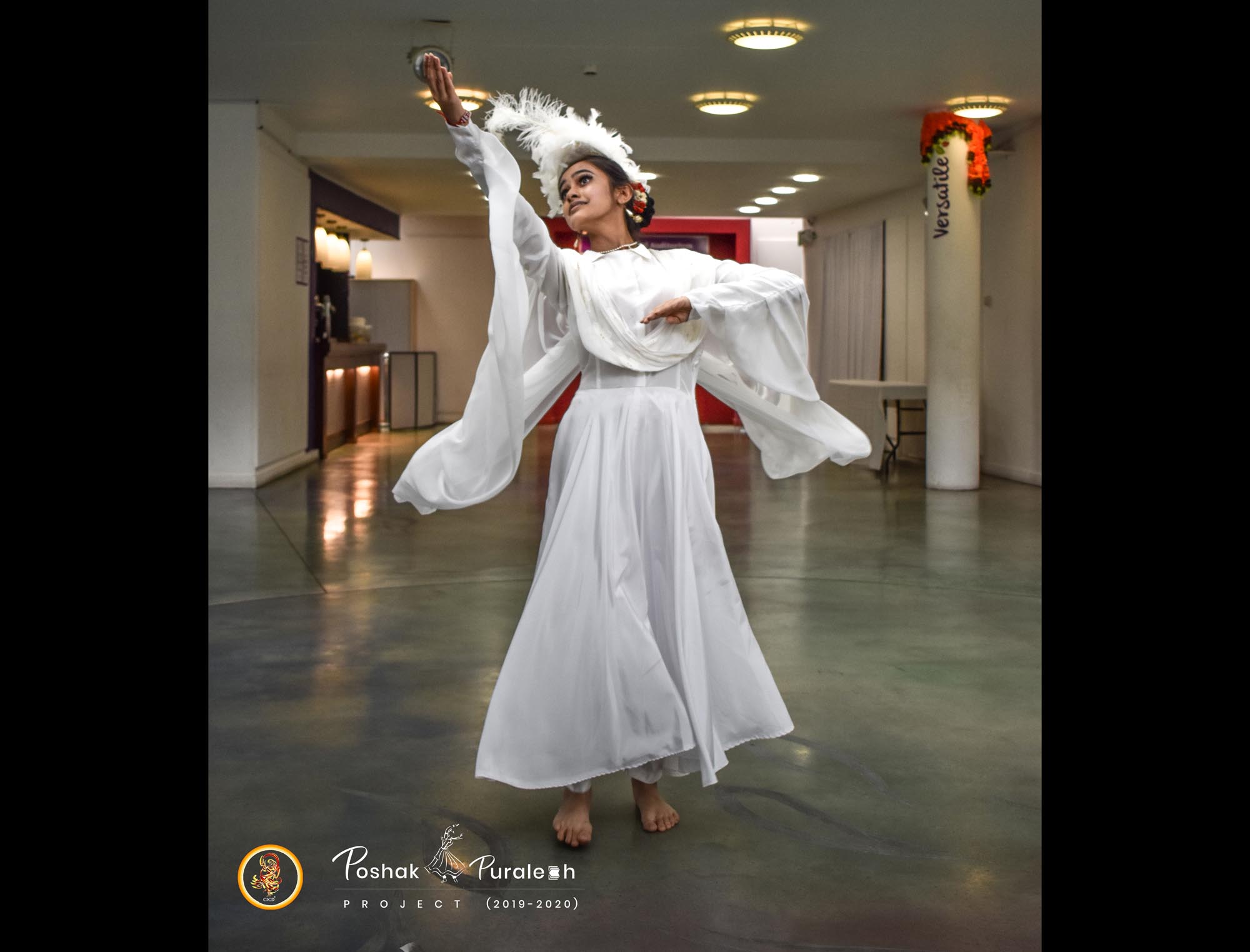
'The Ugly Duckling’ Swan costume
Beige cotton Kathak costume, 1999
Frock – Beige cotton with ikat red print bodice
Trousers – Beige cotton trousers
History – The material was bought and the costumes made in Leicester for Kathak students taught by Nilima Devi MBE at Arts in Education. Several versions were made, in different shades of beige and reds. They all feature the unusual ‘Ikat’ style of warp-printed patterns on the bodices. This was worn as part of Diwali Kathak performance at Phoenix Theatre in 1999. The photo below shows one of the costumes in use in 2020.
</div><div class='half'>
Beige cotton Kathak
Traditional Mughal-style Kathak costume, 1992
Frock – White organza silk with white and red silk border pattern
Scarf (Dupatta) – White and red silk border pattern
History – A traditional Mughal Kathak court style dress designed in 1992, originated in India Ahmedabad, Gujarat. This was stitched in a silk and organza material. It was specially worn for a Kathak performance performed by Nilima Devi MBE. The red and gold brocade border was inlayed onto the edges of the dress to accentuate the traditional Kathak whirling movement. This was worn with white silk trousers.
</div><div class='half'>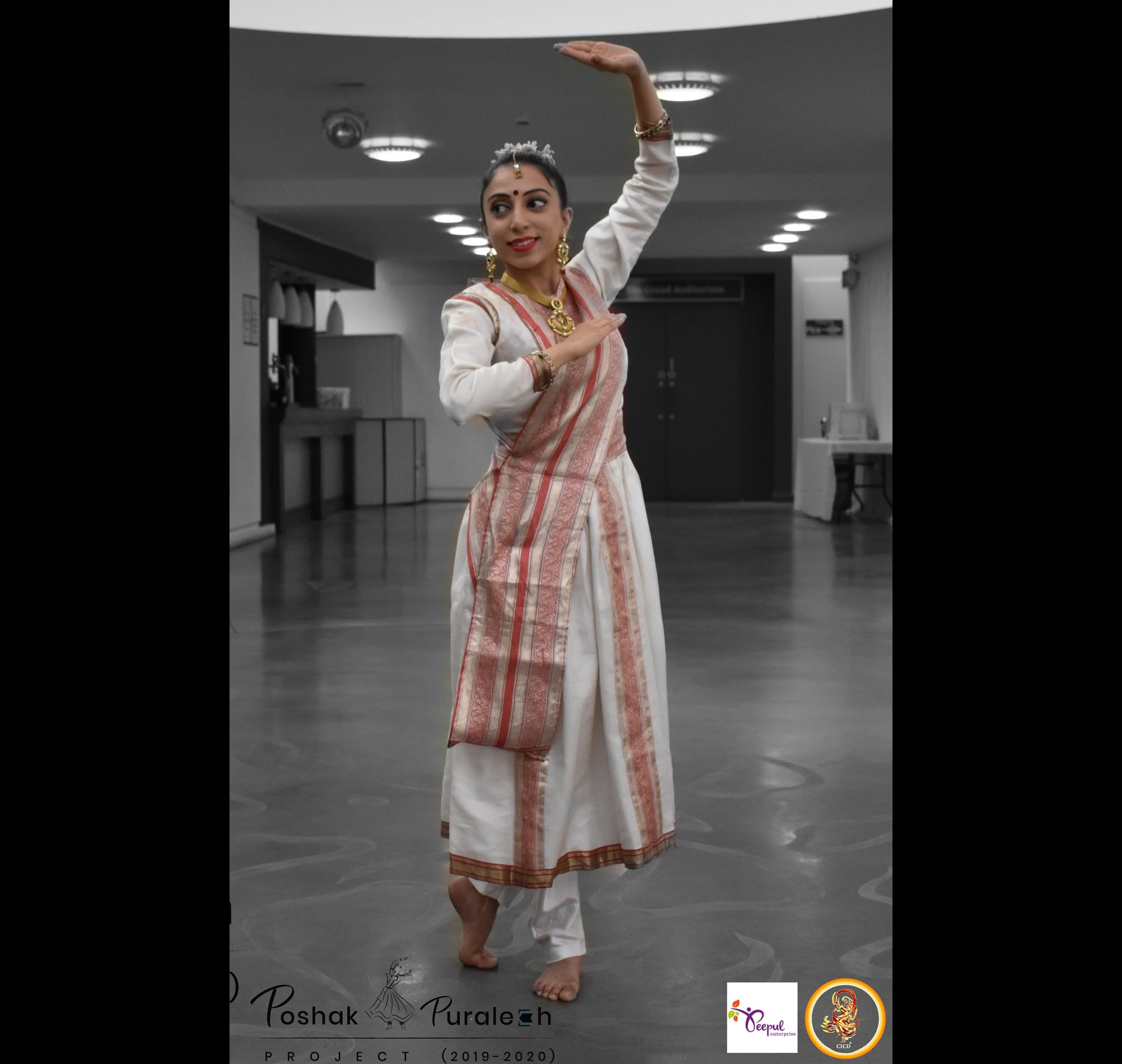
Traditional Mughal-style Kathak
Red and orange cotton folk dance costume, 1989
Blouse (Choli) – Red and orange printed cotton with silver and braid border designs
Skirt (Chaniya) – Red and orange printed cotton with silver and white border designs
Scarf (Dupatta) – Red and orange printed cotton with silver and white border designs
History – This folk dance ‘Garba’ costume was bought from Gujarat (India) in 1989. This one was worn for the traditional Gujarati ‘Garba’ dancing as part of the Navratri Festival, probably at de Montfort Hall, which held Navratri there and also its annual ‘Raas Garba’ competition.
</div><div class='half'>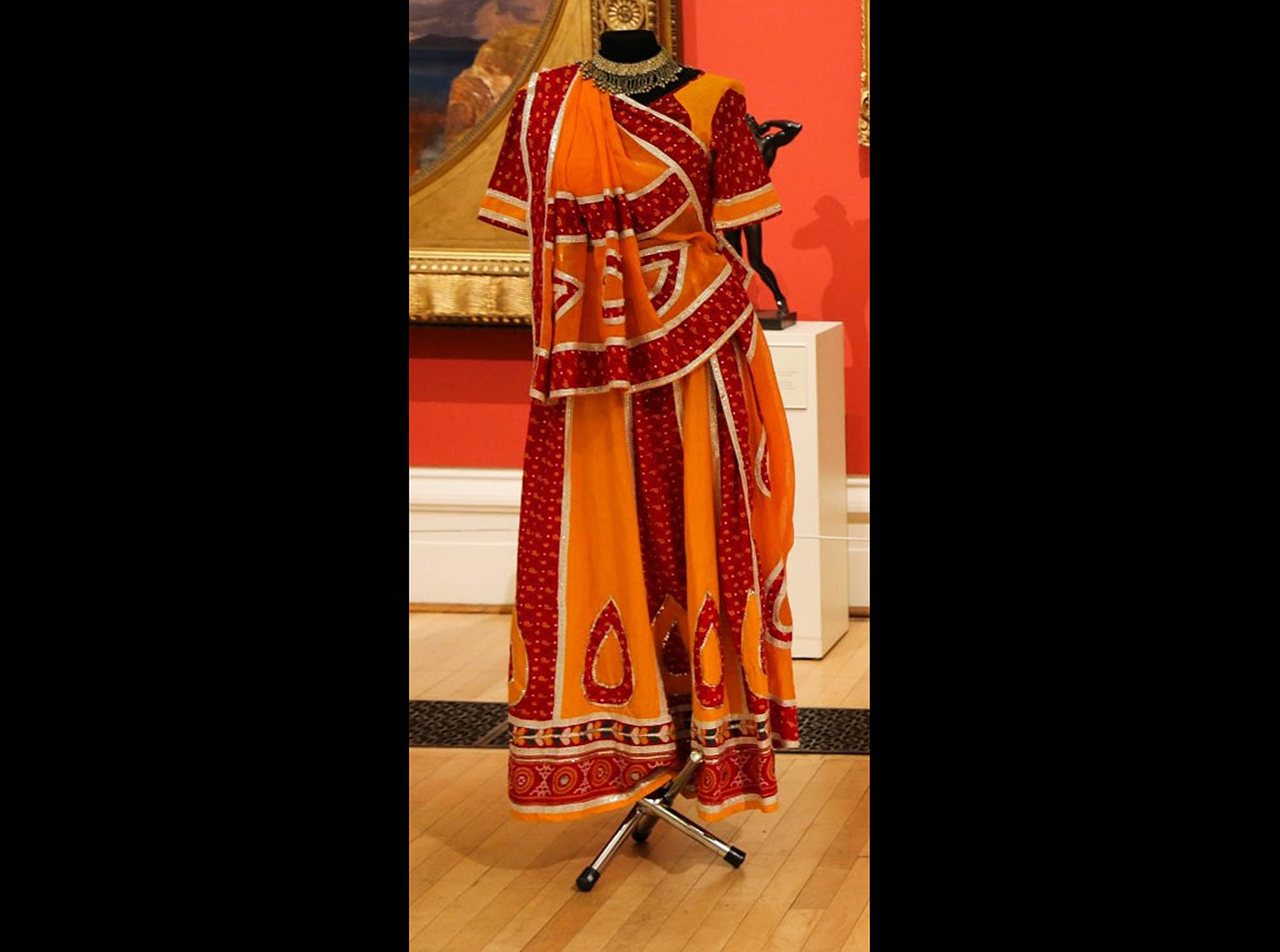
Red and orange cotton folk dance costume
